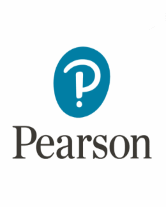Lesson Summary
This lesson is for a high school language arts class. During the lesson, students will summarize, verbally and in writing, a speech that John F. Kennedy gave about the need for America to land a man on the moon.
Objectives
The students will analyze a speech and identify its main idea.
The students will first verbally summarize and then write a summary paragraph about the speech.
Procedure
-
Demonstration
Discuss speeches and the particular objectives of a person who writes a speech. Usually, the writer wants a group of people to be persuaded to act a particular way or to believe in something. In this speech, found at http://www.historyplace.com/speeches/jfk-space.htm, John F. Kennedy wanted to convince people that America needed to send a man to the moon.
Review the steps of summarizing nonfiction texts:
Skim the text to get a general idea of the topic
Delete unnecessary or redundant material
Find the main ideas in the text
Find or create a topic sentence
Substitute general or "umbrella" terms when appropriate (for example, trees instead of oak, maple, and pine)
Have students scan the speech to get an idea of Kennedy's specific message and some of his main points.
Next, have them read the speech carefully and cross out sentences or parts of the speech that they don't think are central to Kennedy's message. For example, the first four paragraphs are illustrative, but they are not central to Kennedy's main point and therefore should not be included in a paragraph summary of this speech, so students can cross out the passages.
Ask students to circle sentences that are crucial to the speech and that support Kennedy's main idea. For example, in the eleventh paragraph, the following sentence should be circled because it is a reason that supports why Americans should go into space (the main idea): "For the eyes of the world now look into space, to the moon and to the planets beyond, and we have vowed that we shall not see it governed by a hostile flag of conquest, but by a banner of freedom and peace. We have vowed that we shall not see space filled with weapons of mass destruction, but with instruments of knowledge and understanding."
Point out that in more sophisticated writing, the main idea is not necessarily found in the very first paragraph, which is the case in this speech.
Arrange students in pairs, and have them use their marked-up speech to help them verbally summarize the speech to one another.
Have students write a paragraph that summarizes Kennedy's speech and a topic sentence that states the main idea of the speech.
Have pairs share their written summaries and discuss how their summaries differed and how they were the same. Have students check that the first sentence of their partner's paragraph states the main idea of the speech and that the sentences that follow contain points that support the main idea. Explain to students that Kennedy is trying to persuade Americans of his viewpoint. Remind students that they must be sure that they do not include their opinion of Kennedy's speech or of his message in their summary.
Challenge students further by having them reduce their paragraph summary to one sentence.
Guided practice
Have students choose another famous speech, diary entry, letter, or article that was written by or about an author that you are studying in class. Have them first scan the text to get an idea of what the text is about. Then have them read the text more closely, crossing out any sentences that are not essential and circling those sentences that support the main idea of the text. Have students use their marked-up text as an outline for a summary paragraph of what they've read.
-
Assessment
Evaluate students' understanding of summarization by asking them to write a paragraph that defines summary and explains how to summarize nonfiction. Use the summary paragraphs that they wrote independently to determine whether they understand summarizing nonfiction. Encourage peer assessment by dividing students into pairs and having them exchange the nonfiction text that they summarized (JFK speech) and their summary paragraph and evaluate whether their paragraphs aptly summarize the texts.

During this high school language arts lesson, students will summarize, verbally and in writing, a speech that John F. Kennedy gave about the need for America to land a man on the moon.






